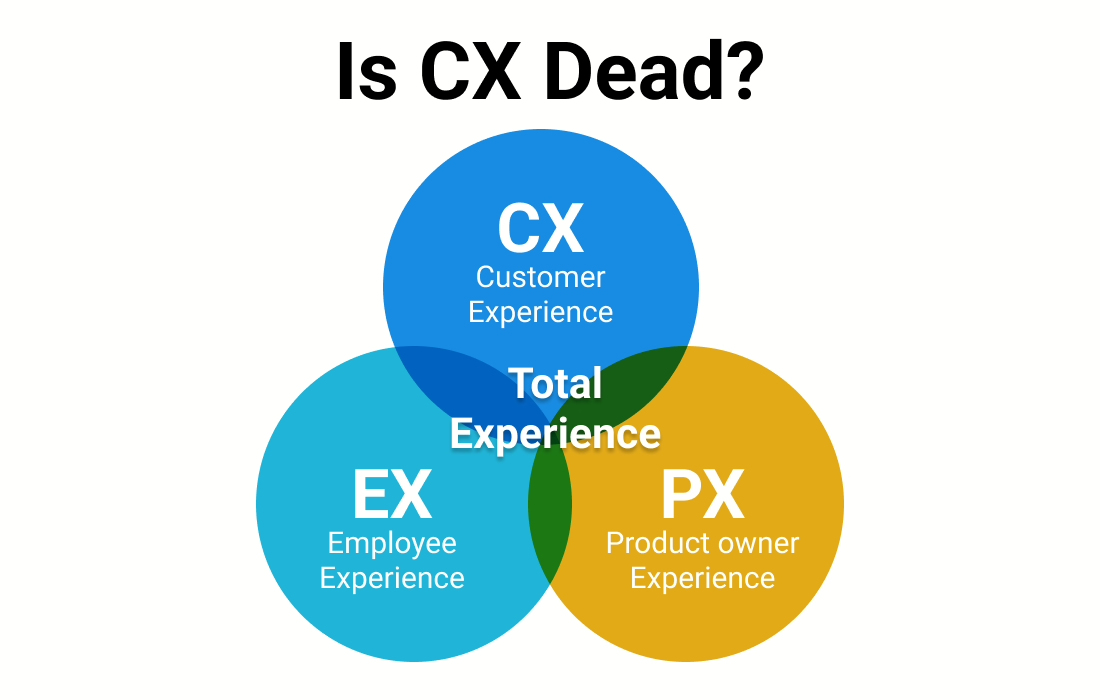CCM – Why Total Experience (TX) is the Future

Customer Communications Management (CCM) platforms are the backbone of personalised, high-volume, and often regulated communications, from onboarding journeys to renewal notices and beyond.
For years, the spotlight has rightly been on Customer Experience (CX). Every message is a brand moment. If it’s delayed, confusing, or off-brand, then trust erodes. But when it’s timely, clear, and relevant, it builds loyalty and drives value. Your communications are your customer experience in action.
But CX alone isn’t enough.
I first heard the term Total Experience (TX) a few years ago at an OpenText World event. TX, as defined by Gartner and Forrester, combines Customer Experience (CX), Employee Experience (EX), User Experience (UX), and sometimes Multiexperience (MX). The idea is that seamless experiences across touchpoints create stronger engagement and value.
It’s a powerful concept, but in the context of CCM, I believe something crucial is missing: the Product Owner Experience (PX). These are the people accountable for the platform’s success. They manage licensing, vendor relationships, governance, and long-term roadmap alignment. Without a healthy PX, even the best CX and EX strategies will struggle to deliver sustainable results.
Let’s break it down:
CX: Every message matters.
Customers don’t see systems, they experience outcomes. Communications must be accurate, consistent, and timely across all channels. CCM platforms like Quadient Inspire and OpenText Exstream are evolving to deliver hyper-personalised, omni-channel messaging that meets customers where they are.
EX: The employee’s day-to-day matters.
If your CCM solution is complex, outdated, or overly reliant on IT, business users, designers, and compliance teams will struggle. Manual workarounds aren’t scalable or safe. Empowered employees with intuitive tools and unified data can deliver faster, smarter, compliant communications, and enjoy doing so.
PX: The product owner’s reality matters.
Product owners sit at the crossroads of strategy, governance, and delivery. They’re responsible for making the CCM platform sustainable, not just functional. Their challenges aren’t about day-to-day authoring or approvals but about budgets, licensing, vendor relations, and long-term alignment with business goals and budgets.
If licensing is opaque, support slow, or the vendor roadmap drifts from your strategic direction, the platform quickly turns from an enabler into a constraint. PX is about creating the right conditions for the platform to thrive:
• clear cost and licensing models
• predictable vendor support and transparency
• alignment between platform roadmap and enterprise strategy
• governance structures that encourage innovation, not bureaucracy
When PX is healthy, organisations can evolve their CCM capabilities with confidence. Knowing that both business and IT are backed by a solid, future-proof foundation. It’s the invisible layer that makes CX and EX possible.
Most TX frameworks overlook the product owner’s perspective, yet in CCM, that’s often where transformation succeeds or fails.
TX ties all the X’s together.
According to leading research, organisations that embrace a Total Experience (TX) strategy outperform their peers across satisfaction and financial metrics. One study reported a 64 % ROI for experience leaders (HCL Technologies, The Blueprint to Total Experience). Another found that aligning brand and customer experience can produce up to a 3.5× revenue uplift (Forrester, Total Experience Score). Gartner has likewise reported up to 25 % higher productivity and 20 % higher customer satisfaction for organisations prioritising TX.
Yet all of these studies overlook the Product Owner Experience (PX). This is the layer that determines whether a CCM platform will truly evolve, scale, and remain aligned with business goals. When CX, EX, and PX come together, the benefits multiply: communications are faster to produce, easier to manage, and more impactful; governance strengthens; employees are more engaged; and the platform begins to deliver real, measurable business value, not just output.
So if you’re reviewing your CCM environment, ask yourself:
• Are we delivering communications our customers truly value?
• Do our teams enjoy using the platform, or do they dread it?
• Is our vendor a strategic partner or just another licence provider?
Total Experience in CCM isn’t another buzzword. It’s a strategy, and it’s how customer-centric organisations are setting themselves apart.
👉 At Doctricks, we help turn strategy into action by delivering function, not fiction.